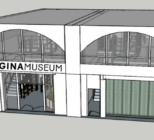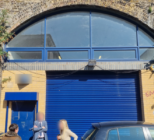The old adage is that if you fail to learn from history then you’ll be doomed to repeat it. That’s all well and good, but some topics have never been properly studied and so are impossible to learn from: museum closures, for example.
Academics Fiona Candlin, Jamie Larkin, Andrea Ballatore and Alexandra Poulovassilis set out to change this. As part of extensive work to chart all British museum closures in the past half century, last month Mapping Museums 1960-2020: A report on the data was published. The resource is designed to help the sector better understand what contributed to these closures – and by extension, how to counteract others experiencing the same fate in future.
Publishing this report to coincide with the coronavirus lockdown – which may lead to any number of museums being forced to close – could either be viewed as ironic or fortuitous, depending on your perspective. While the picture may already have drastically changed in 2020, the research at the very least provides a reputable baseline to compare the sector pre- and post-pandemic.

In the days immediately following the study’s 17th March launch, it was “soon clear that the social shutdown accompanied by Covid-19 had the capacity to reshape the sector, threatening particularly larger independent museums that are heavily reliant on visitor income,” according to Dr Jamie Larkin, assistant professor of Creative and Cultural Industries at Chapman University.
“One thing that became apparent in the Mapping Museums project,” he continues, “was that historically closures of museums aren’t systematically documented, thus making it difficult to draw assessments about why museums close at certain times.”
In an attempt to utilise his mapping background to support institutions fearing for their survival, Larkin has now launched a ‘UK museums closure threat’ Google map. In addition to sites facing permanent closure, the resource also includes those experiencing “significant financial hardship.
Created Google Map showing UK #museums that have self-identified as at risk of permanent closure due to COVID-19. Hopefully of use to individuals and policy-makers looking to help these museums: https://t.co/Zxm9FAlEOR
— Jamie Larkin (@jlarkin65) March 27, 2020
“On seeing the first few appeals that cited explicit threat of closure, I thought it would be useful to create a tool to track these appeals; both to highlight the plight of museums struggling in the new circumstances, but also as a tool that might be of use to researchers and policy-makers when thinking about the kind of support certain areas might need or understanding why some museums are particular vulnerable to closure,” he concludes.
“Overnight we lost almost the entirety of our income”
One paramount reason many independent museums have been left so vulnerable is the total and sudden loss of their visitor revenue lifeblood.
Andrew Lovett, chief executive of Black Country Living Museum and chair of the Association of Independent Museums, is acutely aware of the predicament facing self-sustaining cultural institutions across the nation.
“Independent museums across the UK are struggling to see a route out of this crisis, even once the lockdown is lifted,” he told Advisor. “Loss of income, not least over the Easter holiday, coupled with the need to spend-down any reserves, has left many in a perilous position. A heritage tipping point is fast approaching.”
Black Country Living Museum, he tells us, is not in immediate danger of closure, but that lockdown has left it with a loss of 95% of its traditional income.

While Lovett welcomes government’s measures, especially the Job Retention Scheme, labelling them “a vital and welcome lifeline”, he adds that very significant further support is needed to avoid a “fire-sale of assets, peoples’ lives and communities”.
Jamie Larkin’s latest map aims to ensure people are aware of the museums most at risk of such ‘fire sales’ to mobilise supportive action.
One of the newest names on the map is London’s Vagina Museum. Having opened in the autumn to a wild chorus of excitement, with media outlets across the world falling over themselves to publicise the launch, it seems very cruel that just a few months later the attraction has is being pushed to the precipice of financial ruin.
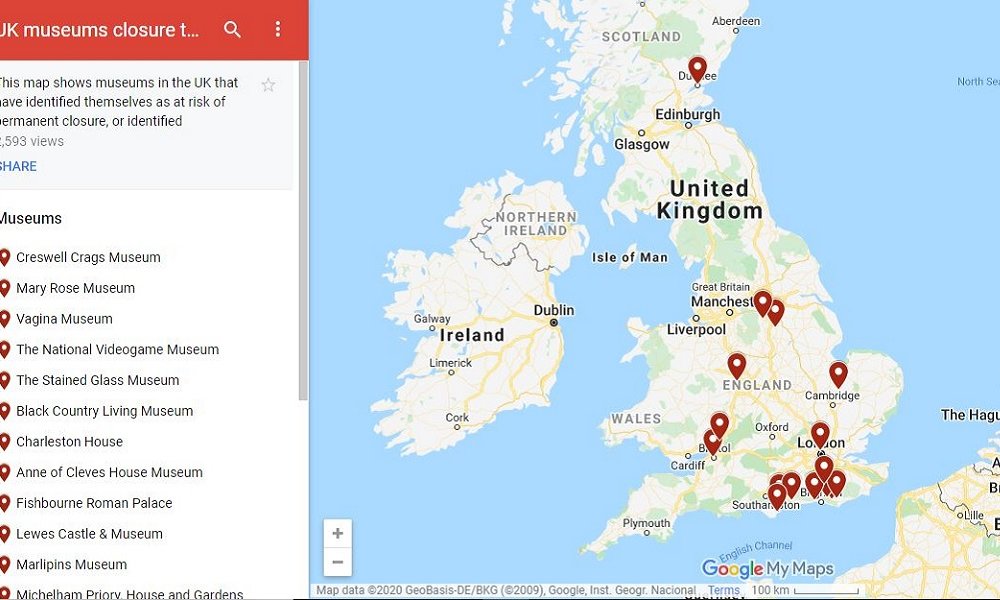
“Overnight we lost almost the entirety of our income,” the Museum’s founder, Florence Schechter, tells Advisor. Receiving no government, council, public or private funding, the Vagina Museum instead relies on a cocktail of retail, venue hire, events programming, donations, membership programmes and corporate sponsorship.
Schechter, who worked part-time and as a freelancer to help get the Museum off the ground, had previously only seen this fierce independent as a positive. “I always thought it would be a good thing to be self-sustaining because it meant we weren’t beholden to any funders and were more free in our operation. I never anticipated this,” she notes.
“Things are difficult but I think potentially survivable for a limited time,” Schechter adds. “We have enough in reserves to pay staff for a few months, but after that we’ll run out. Also, I’d rather not deplete our reserves during this time as I’m aware that we’ll need them when we reopen.”
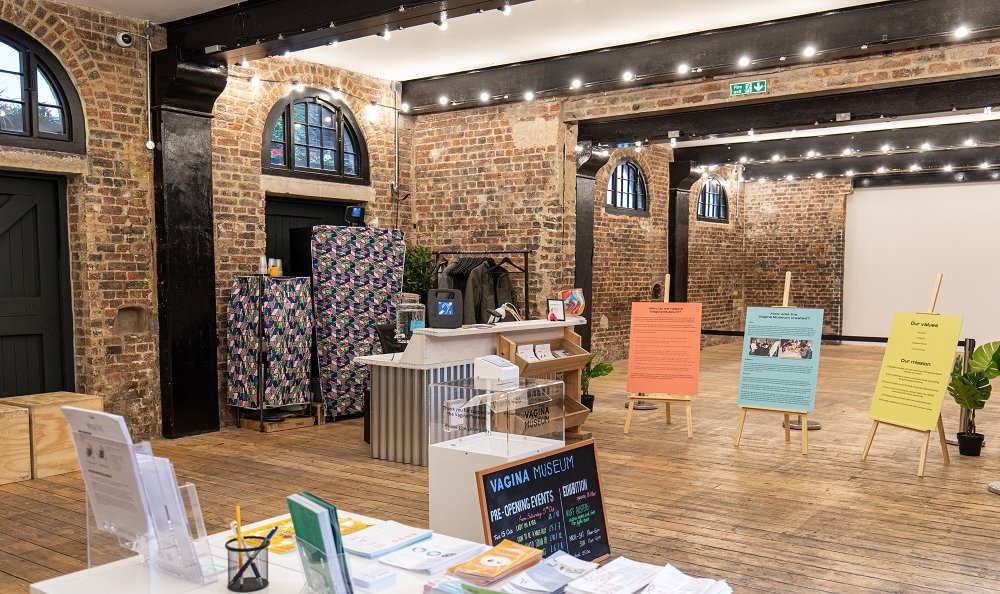
Even the thought of opening the doors again after the crisis isn’t a wholly positive one. “Reopening will be difficult as it’s going to take a while for tourism to return to the levels it was before – meaning it will take a while for our income to return to its previous level. I am also very aware that our tax payments have only been deferred, not cancelled, which means we’ll need to pay them at some point.”
For the time being it’s very much about little victories, with the Museum’s landlords, LabsTech, having suspended rent during the lockdown. Further, all hourly staff have been furloughed and tax payments deferred.
To stem the flow of capital away from the business Schechter has established several efforts to earn some money at this difficult time. This has included expanding the online shop and starting a crowdfunder page.
Grant applications have provided less comfort. “Frustratingly there are a few we aren’t eligible for because we’re not accredited, or other factors relating to how new and small we are.” The Museum has also been exploring new avenues such as approaching corporate organisations for paid marketing.
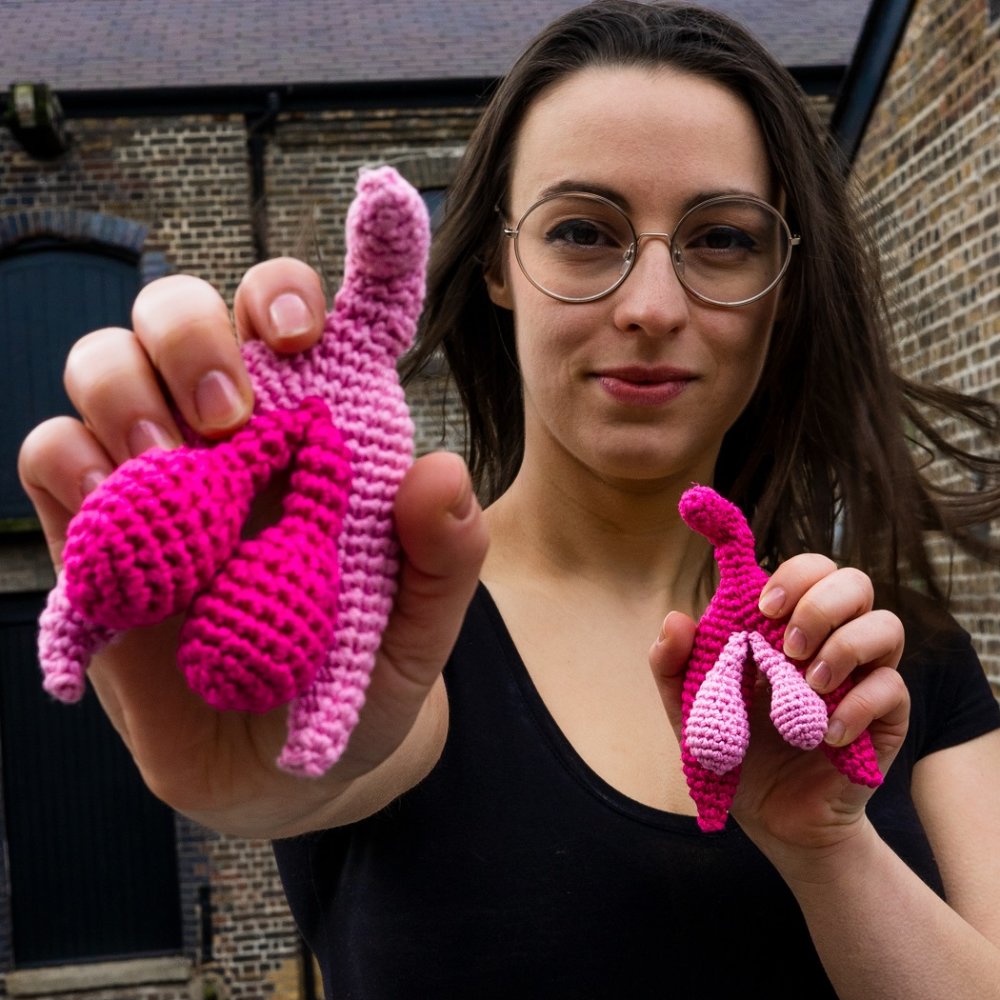
“I’m really anxious for the future,” Schechter concludes. “I worked so hard to get this dream off the ground and the elation of seeing people rejoice around the world when we opened was immense. I don’t want to let them down by having to permanently close the Vagina Museum due to this crisis.”
That sinking feeling
The loss of admission revenues is the recurring issue that leaves many independent museums struggling to plot a path back from the edge. “Even if we are able to reopen later in the year, we will have missed the peak time [school summer holidays] when we generate 80-90% of our annual income,” explains Helen Bonser-Wilton, chief executive officer of the Mary Rose Trust.
With a yearly base cost of around £1.5 million, it’s clear to see why the Mary Rose is in jeopardy. Not even admission fees in a busy year can fund the essential conservation its unique collection mandates; philanthropic donations of over £350,000 are also a staple of the museum’s funding model.
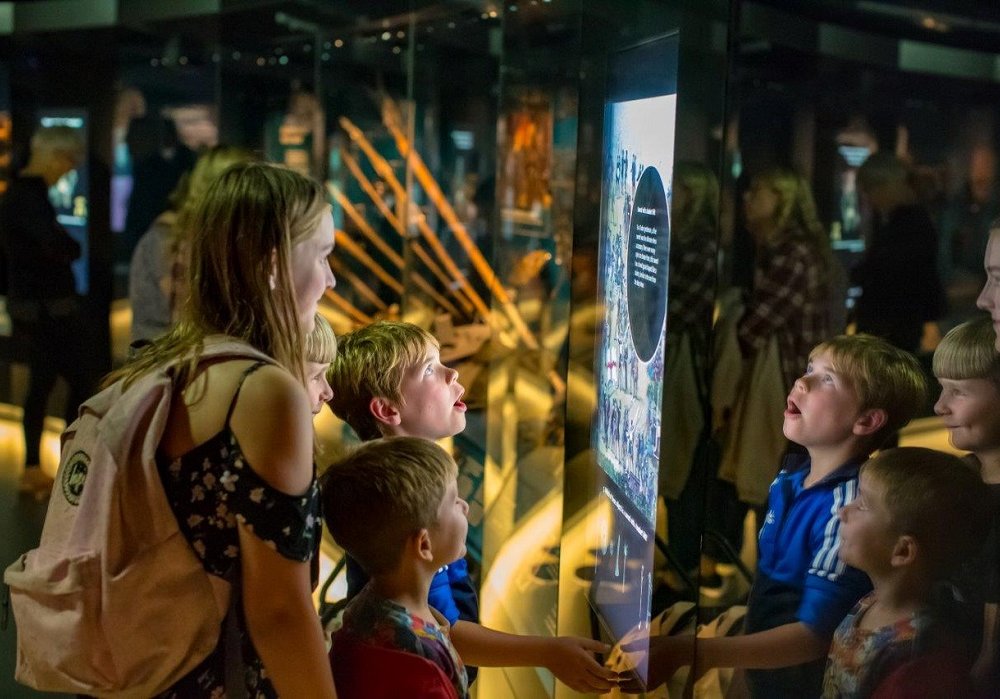
The coronavirus lockdown has, Bonser-Wilton believes, “shined a light on an endemic problem which we’ve struggled to get people to listen to before now”. While acknowledging the current scenario represents “an extreme example of something going wrong”, she asks: “when you really think about it, how many of us are in mortal peril all the time?”
The Trust’s CEO believes this goes far deeper than a once in a lifetime crisis. “There’s a fundamental underpinning issue here with independent museums: there is no fall back,” she tells Advisor. Without the core funding received by national museums or Arts Council National Portfolio Organisations, she notes that independent museums are “uniquely vulnerable and their collections are at huge risk”.
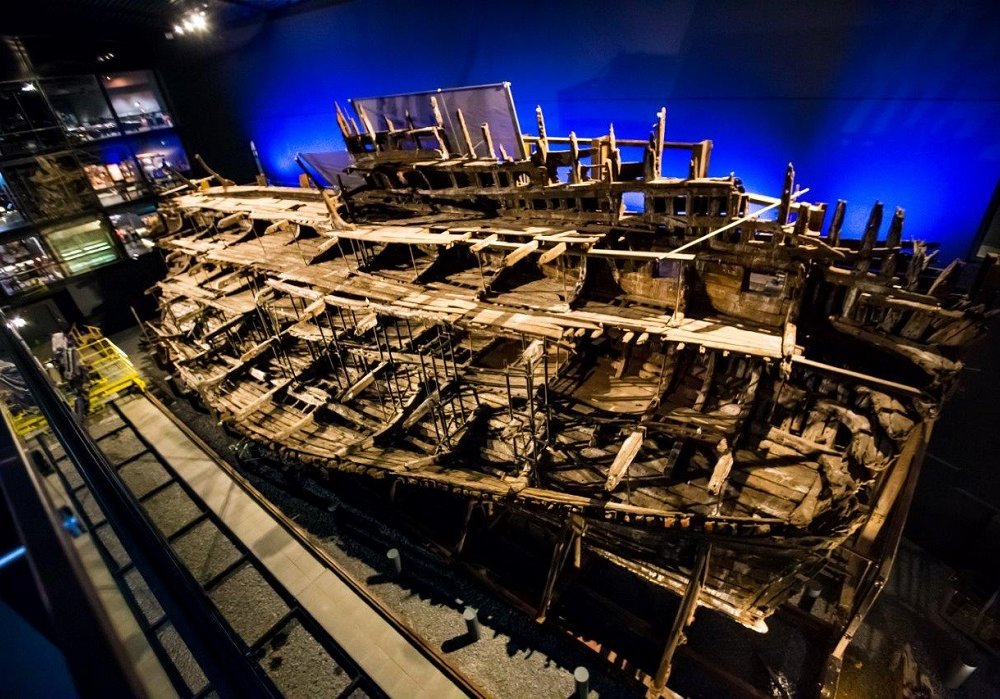
Despite having furloughed 82% of staff up to now, the museum only has enough in reserve to make it through to June. Similar to the Vagina Museum’s experience, grant funding doesn’t seem a viable support mechanism either. “We haven’t found anything that even touches the sides of what we need,” Bonser-Wilton explains.
Without a radical overhaul to the independent museum sector’s funding formula, the Mary Rose chief executive believes similar flirtations with the abyss will happen “again and again”.
“This is a massive, existential problem for independent museums,” she concludes. “It can’t carry on the way it is. I’ve had so many conversations with people across the UK and most independent museums are only ever one crisis away from closing their doors for good.”




